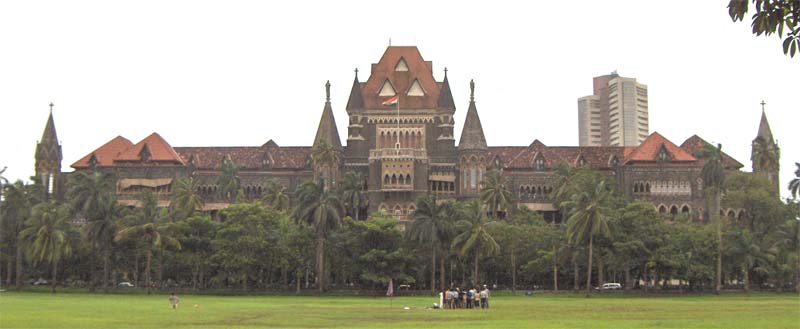‘Husband Not Master of Wife’: Why This SC Judgement Is a Huge Step Forward
This is the second colonial-era law that the Supreme Court has struck down this month. The first being parts of Section 377, which criminalised ‘unnatural sex’ – widely seen as an anti-homosexual law.

A five-judge bench of the Supreme Court today decriminalised adultery in India. Chief Justice Dipak Misra, while delivering the judgement, said, “The husband is not the master of the wife.”
This is most certainly a step towards establishing equality among the genders.
This is the second colonial-era law that the Supreme Court has struck down this month. The first being parts of Section 377, which criminalised ‘unnatural sex’ – widely seen as an anti-homosexual law.
Adultery as a crime: History of this Victorian law
Section 497 of the Indian Penal Code (IPC) – which is the section dealing with adultery – has existed for more than 150 years. It was created at a time when women were considered to be the property of a man (father or husband) and thus, punished a man, for trespassing on another man’s “property”.
Also, at the time, the idea was that a woman had no sexual agency and so, was not responsible for an affair – since she could neither say no nor ever willing betray her husband. Or so it was believed.

Photo Source: Pascal/Flickr
What is Section 497 of the IPC?
It says that any man who has sexual intercourse with the wife of another man, without the consent of her husband, shall be held liable for the crime of adultery. The law does not confer any right on women to prosecute the adulterous husband or the woman with whom the husband had indulged in sexual intercourse.
In other words, the husband solely has been permitted to prosecute the adulterer.
To consider the long journey the law took from the established norm to being struck down, we have to look at a landmark case.
Commander K M Nanavati vs State of Maharastra
One of India’s most popular cases of marital infidelity is that of Navy Commander K M Nanavati, who shot businessman Prem Ahuja, the lover of his wife, Sylvia. While Nanavati faced prosecution for murder, Sylvia did not.
You May Also Like: Apex Court to Re-Examine Adultery Laws; What Does This Mean for Indian Women?
That 1950s crime of passion was the reason India abolished the jury system and laid the first doubts over the law – since although Nanavati was prosecuted, the existence of such a law meant that:
a) A man seeking revenge against another man for having an affair with his wife was something that is expected to happen.

b) Since it is expected to happen regularly, a legal way to get that revenge should exist.
Since then, there have been many challenges to this law. As early as 1951, Yusuf Aziz challenged the constitutional validity of this section.
However, the Bombay High Court upheld the section saying that this provision was made to safeguard the women.

Photo Source: Wikimedia Commons
20 years later, in 1971, the Law Commission made a recommendation to make the law gender-neutral and also reduce the jail term from five years to two years. These recommendations were not taken into consideration. In 2006, the National Commission of Women recommended that adultery be decriminalised.
What’s interesting to note is that the first draft of the IPC did not contain any provisions for adultery. It was only inserted later.
Strike down: What did the Justices say?
Justice Nariman termed Section 497 as an archaic law and agreed with the CJI and Justice Khanwilkar. He also said that the penal provision was violative of the rights to equality and equal opportunity to women.
Justice Chandrachud said that Section 497 destroyed and deprived women of dignity.

Photo Source: Youtube
Justice Indu Malhotra, the lone woman judge on the bench, said that Section 497 was a clear violation of the fundamental rights granted in the Constitution and there was no justification for a continuation of the provision.
Calling the law archaic and saying that it violated Articles 14 and 21 of the Indian Constitution, the justices said, “Adultery can be (a) ground for civil issues, including dissolution of marriage but it cannot be a criminal offence.”
Highlights of the verdict
1. Adultery can be treated as a civil wrong for the dissolution of marriage.
2. Adultery will no longer be a criminal offence.
3. While adultery is not a criminal case, in case a spouse commits suicide because of a partner’s adulterous relationship, it will be treated as abetment to suicide.
4. Adultery might not be the cause of an unhappy marriage: it could be a result of an unhappy marriage, said the CJI.

5. Justice Chandrachud upheld the sexual autonomy of the woman and identified her as a sexual being with desires.
6. In contrast, Justice Malhotra said that adultery is a moral wrong.
What does this mean for us now?
In effect, it means that no one can be held criminally liable for indulging in extramarital sex. The judiciary has chosen to stay away from our bedrooms and perhaps, in a sense, extended the right to privacy to our personal lives as well.
While adultery is no longer a criminal offence, it remains a civil offence and will also be a consideration when applying for a divorce.
(Edited by Vinayak Hegde)
Like this story? Or have something to share?
Write to us: [email protected]
Connect with us on Facebook and Twitter.

Similar Story

Laundromats in India? Couple Built Rs 100 Crore Biz Washing Dirty Linen Across 100 Cities
Faridabad’s Arunabh Sinha and his wife Gunjan Taneja launched UClean in 2017 to set up an organised laundromat service in India. Currently, they are spread across 100+ cities and have 350+ outlets across the country.
Read more >
If you found our stories insightful, informative, or even just enjoyable, we invite you to consider making a voluntary payment to support the work we do at The Better India. Your contribution helps us continue producing quality content that educates, inspires, and drives positive change.
Choose one of the payment options below for your contribution-
By paying for the stories you value, you directly contribute to sustaining our efforts focused on making a difference in the world. Together, let's ensure that impactful stories continue to be told and shared, enriching lives and communities alike.
Thank you for your support. Here are some frequently asked questions you might find helpful to know why you are contributing?


This story made me
-
97
-
121
-
89
-
167












